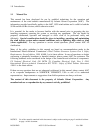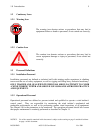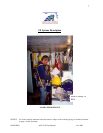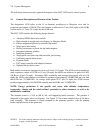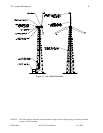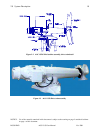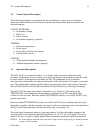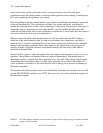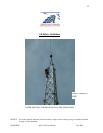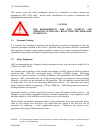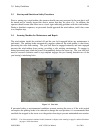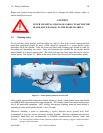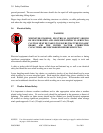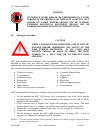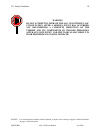2.0 System Description
NOTICE: Use of the material contained in this document is subject to the warning on page Iv and the disclaimer
on page v of this document.
DOC012R02 AOC 15/50 User Manual Nov 2001
12
inertia of the rotor and drive train that must be overcome initially. Once the wind speed
conditions are met, the parking brake is released and the generator starts rotating, at which point
PLC starts monitoring the generator rotor speed.
Once the parking brake has released and the rotor speed is in band,the wind turbine is connected
to the grid automatically. The wind turbine will then stay on-line until wind conditions fall
outside the operating band or until a fault or shutdown is registered. The generator shaft speed is
measured using two speed sensors from which the PLC can tell whether the shaft speed falls
within the required range. Since power produced is proportional to rotor speed, the rotor speed is
also used to check for excessive power generation.
Whenever the wind and/or shaft speeds deviate from the specified values the PLC initiates a
shutdown of the wind turbine system. In order to avoid unnecessary shutdowns, each fault is
monitored for a set period to confirm that it is not due to a temporary deviation but to a definite
change in the operating conditions. Since faults impact on the system with varying degrees of
severity, in terms of possible electrical or mechanical damage, the time delays after which a
shutdown is initiated differ.
Should the PLC register a fault that requires the wind turbine to be shut down, it does so in a set
sequence. The tip brakes and dynamic brake are deployed immediately. The parking brake is
then deployed after a variable time delay, generally set to 4 seconds. Following any deployment
of the brakes the wind turbine enters a cooling cycle, generally set to 15mins. The turbine will
not be available to comeback on line until the end of the cooling cycle to prevent overheating of
the brake components.
The dynamic and parking brakes can be tested individually when their test switches are set to ON
and the TEST/OFF/ON switch is set to TEST. See section 9.1 for a more detailed description of
the individual switches.



